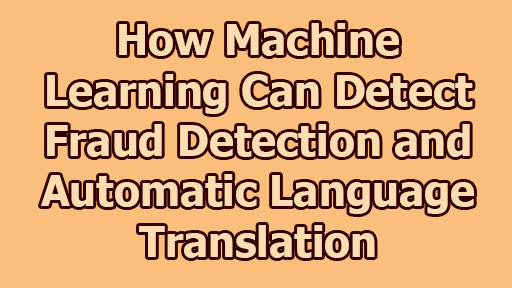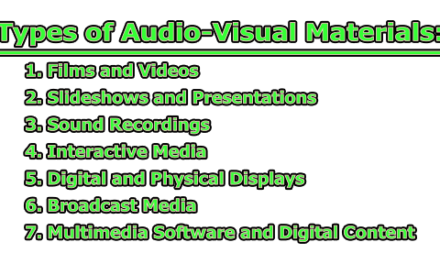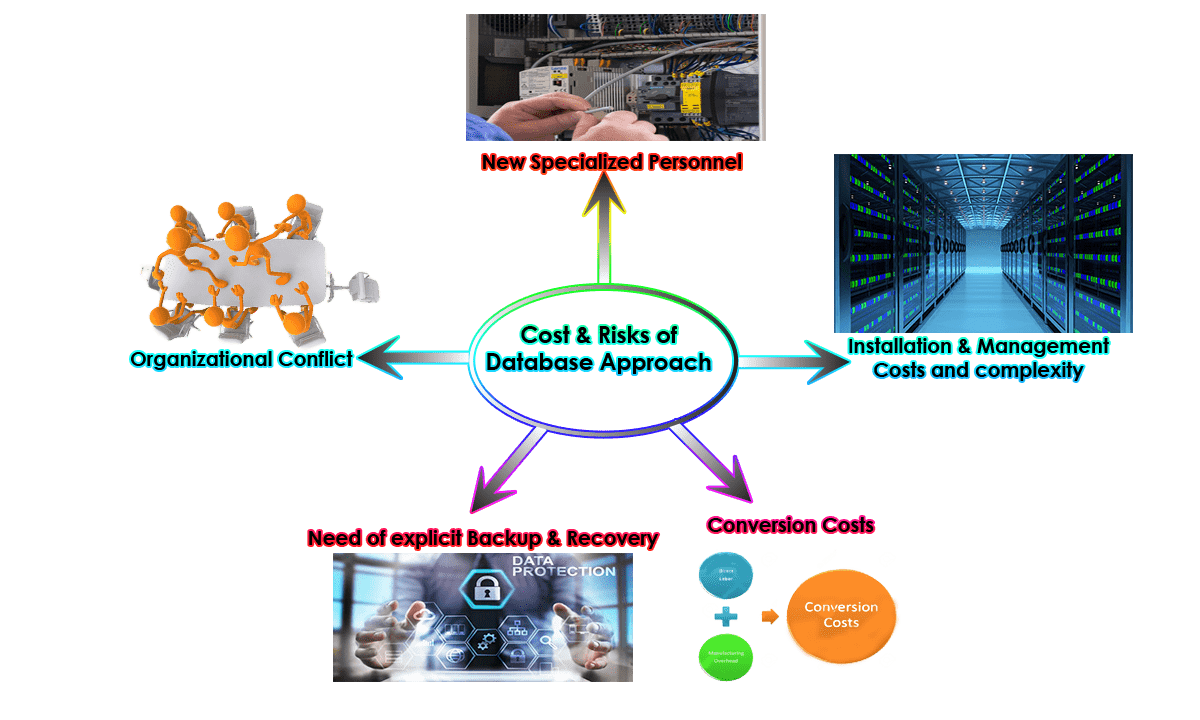How Machine Learning Can Detect Fraud Detection and Automatic Language Translation:
Machine learning has emerged as a transformative force in the fields of fraud detection and automatic language translation, revolutionizing how we tackle complex challenges in these domains. In the realm of fraud detection, machine learning algorithms leverage historical data to identify subtle patterns and anomalies, enabling businesses to safeguard their operations against illicit activities. On the other hand, in the domain of automatic language translation, machine learning models have empowered us to break down language barriers by learning the intricate nuances of multiple languages and providing real-time translations, thereby fostering global communication. In this age of data-driven innovation, machine learning is at the forefront, showcasing its potential to enhance security and facilitate cross-cultural interactions. In the rest of this article, we will explore how machine learning can detect fraud detection and automatic language translation.
Fraud Detection: Machine learning has revolutionized fraud detection by harnessing its ability to efficiently process and analyze massive volumes of data, uncovering intricate patterns that often elude traditional rule-based systems. The process of leveraging machine learning for fraud detection involves a series of meticulously crafted steps:
1. Data Collection: The foundation of effective fraud detection is comprehensive historical transaction data. This dataset must encompass a broad spectrum of transactions, encompassing both legitimate and known fraudulent activities. Diverse and representative data is essential to train a robust fraud detection model that can adapt to various scenarios and tactics.
2. Feature Engineering: Once the data is acquired, feature engineering becomes a critical phase. Features, such as transaction amounts, frequency, timestamps, geographical information, and user behavior, are carefully crafted from the raw data. Feature engineering is pivotal as it equips the model with the requisite information to differentiate between legitimate and fraudulent activities effectively.
3. Model Selection: Choosing the appropriate machine learning algorithm is a crucial decision in the fraud detection process. Commonly used algorithms include Decision Trees, Random Forests, Support Vector Machines (SVM), Logistic Regression, and advanced techniques like Neural Networks and ensemble methods. The choice depends on the specific characteristics of the data and the desired balance between accuracy and interpretability.
4. Training: With feature-engineered data in hand, the selected machine learning model is trained. During this phase, the model learns from labeled historical data, where each transaction is categorized as fraudulent or legitimate. The training process enables the model to recognize intricate patterns, correlations, and deviations from normal behavior.
5. Anomaly Detection: In real-time operation, the trained model evaluates incoming transactions. It assigns a probability score to each transaction, indicating the likelihood of it being fraudulent. Transactions surpassing a predefined threshold are flagged as potentially fraudulent. Anomaly detection techniques, including clustering, can also be applied to group transactions with similar characteristics, aiding further analysis.
6. Model Optimization: Model performance is an ongoing concern. Continuous optimization involves fine-tuning hyperparameters, periodically retraining the model with new data, and refining the feature set. This iterative process ensures that the model remains adaptive to emerging fraud tactics and maintains high accuracy.
7. Real-Time Monitoring: Deployed in a real-time environment, the model constantly monitors incoming transactions. As transactions occur, the model assesses them in milliseconds, identifying and flagging suspicious activities. Real-time monitoring ensures rapid responses to potential fraud attempts.
8. Feedback Loop: To refine and enhance the model’s performance, a feedback loop is established. Feedback is gathered on flagged transactions, including both false positives (legitimate transactions mistakenly flagged as fraudulent) and false negatives (fraudulent transactions not flagged). This feedback informs adjustments to the model, including fine-tuning the threshold for flagging transactions, improving overall accuracy, and reducing false alarms.
In essence, the application of machine learning in fraud detection empowers organizations to stay ahead of increasingly sophisticated fraudulent activities, providing a robust defense against financial losses and security breaches. This dynamic process of data-driven analysis and adaptation ensures that fraud detection systems remain effective and agile in an ever-evolving landscape.
Automatic Language Translation: Machine learning has ushered in a new era in automatic language translation, offering systems the ability to comprehend and generate translations with a level of contextual relevance and accuracy that surpasses traditional rule-based approaches. Here is an exploration of how machine learning powers this transformative capability:
1. Data Collection: The foundation of automatic language translation lies in the collection of extensive bilingual or multilingual datasets. These datasets consist of pairs of sentences in different languages, accompanied by their corresponding translations. The richness and diversity of these datasets provide the essential training material for translation models.
2. Tokenization and Preprocessing: To prepare the text for machine learning, sentences are first tokenized, breaking them down into individual words or subword units. Preprocessing steps, such as removing punctuation, converting text to lowercase, and handling special characters, ensure that the text is in a consistent format for further analysis.
3. Embedding: Words and sentences are represented as numerical vectors through the use of word embeddings or subword embeddings. Techniques like Word2Vec, GloVe, or Byte-Pair Encoding capture semantic relationships between words, allowing the model to understand the meaning and context behind each linguistic element.
4. Model Selection: The choice of a sequence-to-sequence model plays a pivotal role in language translation tasks. Transformer-based models, with the exemplar being GPT-3, have demonstrated exceptional performance in this domain. These models are designed to process sequences of data, making them particularly adept at handling language translation.
5. Training: The selected model is trained using the bilingual dataset acquired earlier. During training, the model learns to map input sentences in one language to their corresponding translations in another language. The optimization process fine-tunes model parameters to minimize translation errors and enhance overall performance.
6. Inference: Inference, the real-time translation process, is where the trained model shines. When a user inputs a sentence in one language, the model generates a translation in the target language swiftly and accurately. This capability can be seamlessly integrated into various applications, enabling instantaneous cross-lingual communication.
7. Fine-Tuning: To cater to specific contexts or industries, the model can be further refined through fine-tuning. Domain-specific data or additional training data can be introduced, enhancing translation quality and relevance for specialized fields.
8. Evaluation: Assessing the quality of translations is essential. Metrics such as BLEU (Bilingual Evaluation Understudy), METEOR, and human evaluations are employed to measure fluency, accuracy, and overall translation quality. These evaluations guide improvements and provide insights into the model’s performance.
9. Continuous Learning: Language is dynamic and evolves over time. To stay relevant, machine learning models incorporate user feedback and updated data continuously. This iterative process ensures that the model adapts to changing language patterns and user needs, consistently delivering high-quality translations.
10. Deployment: The final step involves integrating the trained translation model into websites, applications, or services. This empowers users to effortlessly access automatic language translation capabilities, breaking down language barriers and fostering seamless global communication.
In conclusion, machine learning is driving remarkable advancements in fraud detection and automatic language translation, reshaping the landscape of these critical domains. Its ability to analyze vast datasets, recognize intricate patterns, and adapt to evolving challenges makes it an indispensable tool. As machine learning models continue to evolve and learn from new data and user interactions, we can anticipate even more robust fraud detection systems and seamless language translation services in the future. These developments not only enhance security and communication but also underscore the transformative power of artificial intelligence in addressing complex real-world problems.
References:
- Papineni, K., Roukos, S., Ward, T., & Zhu, W. J. (2002). BLEU: a method for automatic evaluation of machine translation. In Proceedings of the 40th annual meeting of the Association for Computational Linguistics (ACL) (Vol. 2, pp. 311-318).
- Brown, P. F., Pietra, V. J. D., Pietra, S. A. D., & Mercer, R. L. (1993). The mathematics of statistical machine translation: Parameter estimation. Computational Linguistics, 19(2), 263-311.
- Mikolov, T., Chen, K., Corrado, G., & Dean, J. (2013). Efficient estimation of word representations in vector space. arXiv preprint arXiv:1301.3781.
- Vaswani, A., Shazeer, N., Parmar, N., Uszkoreit, J., Jones, L., Gomez, A. N., … & Polosukhin, I. (2017). Attention is all you need. Advances in neural information processing systems (NeurIPS), 30.
- Sutskever, I., Vinyals, O., & Le, Q. V. (2014). Sequence to sequence learning with neural networks. In Advances in neural information processing systems (NeurIPS), 27.
- Luong, M. T., Pham, H., & Manning, C. D. (2015). Effective approaches to attention-based neural machine translation. In Proceedings of the 2015 conference on empirical methods in natural language processing (EMNLP) (pp. 1412-1421).
- Lavie, A., & Denkowski, M. (2009). The METEOR metric for automatic evaluation of machine translation. Machine translation, 23(2-3), 105-115.
- Vaswani, A., & Mordatch, I. (2017). Continual unsupervised representation learning. arXiv preprint arXiv:1710.11622.

Library Lecturer at Nurul Amin Degree College










